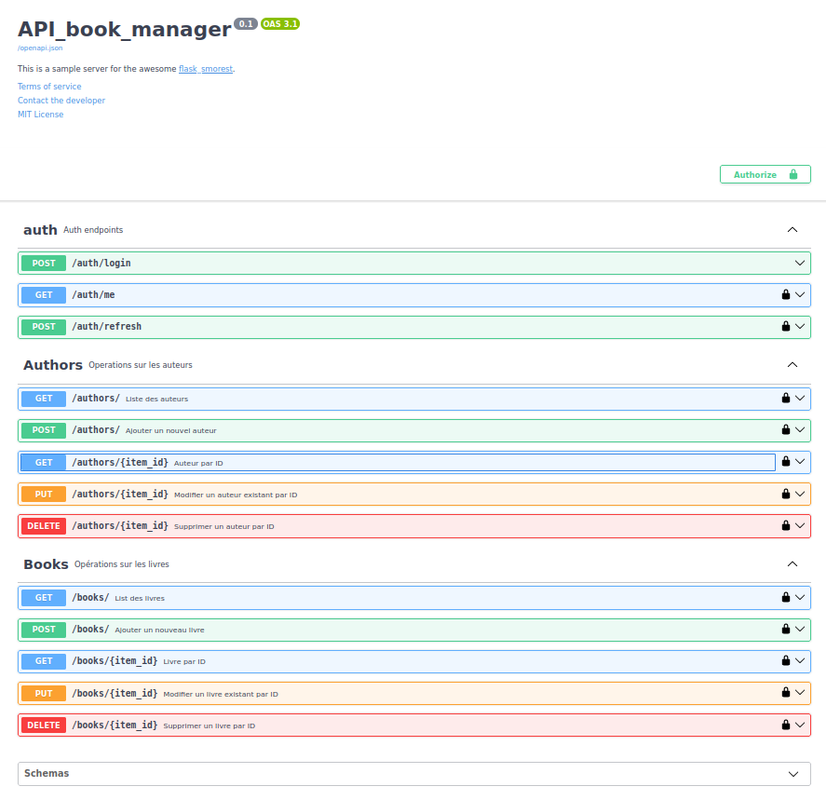Flask application example using the awesome flask-smorest: Flask/Marshmallow-based REST API framework
Widely inspired by https://github.com/lafrech/flask-smorest-sqlalchemy-example
- Flask 3.1
- flask-smorest 0.46
- flask-sqlalchemy 3.1 / sqlalchemy 2.0 / marshmallow-sqlalchemy 1.4
- flask-jwt-extended 4.7
Sqlite with delete cascade (relation an author - many book)
Set up Python environment with Poetry:
poetry install
cp .env.example .env # adjust secrets as neededRun a development server:
poetry run flask --app book_manager --debug runRun the test suite:
poetry run pytest- Open http://127.0.0.1:5000/swagger-ui in your favorite browser
- /auth/login
- Get un JWT token (access_token) for the protected endpoint {"username":"admin","password":"secret"}
- /authors with a valid JWT token for POST / PUT / DELETE
- PUT (need a valid etag in the If-Match HTTP request header)
- DELETE (need a valid etag and delete cascade books)
- /books with a valid JWT token for POST / PUT / DELETE
- PUT (need a valid etag in the If-Match HTTP request header)
- DELETE (need a valid etag)
Have Fun.
Install the formatting and linting tools with Poetry:
poetry add --group dev black flake8Run them locally before committing:
poetry run black .
poetry run flake8 .Both tools respect settings defined in pyproject.toml: max line length is 100 and Flake8 ignores E203 and W503 to align with Black's formatting. Keep your virtual environment up to date, run Black to auto-format, then use Flake8 to catch issues Black does not cover (imports, unused code, complexity). Running both ensures consistent style across contributors and keeps the CI lint checks green.
